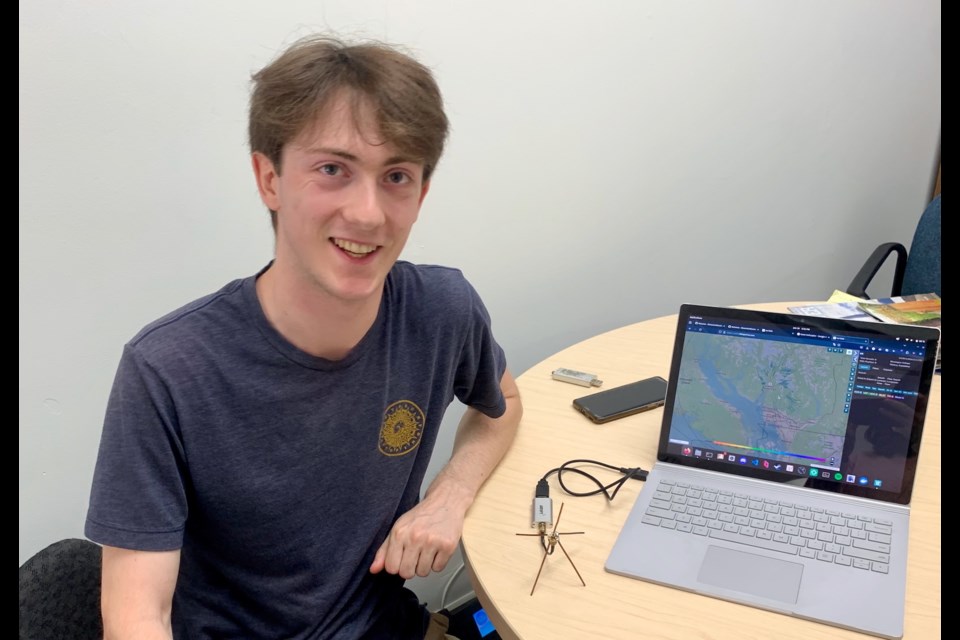In the first days of Squamish's Dryden Creek wildfire last week, when helicopters and planes were swooping over Brackendale and circling Debeck's Hill, Felix Perron could tell his parents in advance when to head out into the yard to spot the coolest aircraft.
"Oh, Mom, Dad, the bomber is coming. We should go outside and have a look,” he told them.
He could also show them online where the helicopters picked up water and dumped it.
The information was all coming from his laptop, attached to some inexpensive equipment and a few pieces of copper wire that he scrounged from his dad's workshop to form a four-legged antenna.
Perron, a fourth-year electrical engineering student at UBC Okanagan, made a homemade flight tracker.
Basically, he tunes into radio frequencies—which look and sound like white noise on his laptop—that contain information about flights in our area.
The information can include location, altitude, speed, and details like where the plane came from, its flight number, and aircraft type.
The process is not unique, Perron stressed.
"There are tens of thousands of people who do this all around the world. There are actually websites you can go to online, and you can track pretty much any aircraft at all times, right, anywhere in the world," he said.
Some popular sites include and .
Perron's point is that almost anyone can learn to do this, and it doesn't have to cost a lot.
"It's really just science at the end of the day, and it almost is magic how you can transmit this type of information just ... using something like this. It's really awesome," he said.
Perron says he encourages others to try and figure out how to make and do things themselves.
“Even just this, using open source software. It is something that, if you really wanted to, you could dig into yourself and figure it out, make changes or stuff like that, and then you can give back and let other people use what you’ve done,” he said.
"I always try to encourage [people to] ... understand what's going on, so you can fix it yourself. ... Even just this, using open source software. It is something that, if you really wanted to, you could dig into yourself and figure it out, make changes or stuff like that, and then you can give back and let other people use what you've done."
He plugs into his laptop a Software Defined Radio (SDR), which looks like a bigger-sized thumb drive, that costs about $50.
A more expensive one, say $100, shows a broader field, he said.
Once set up, he ran his tracking system from a small server tucked away in his closet, picking up an aircraft almost 100 kilometres away.
He did this just for fun.
In the fall, Perron will head to German multinational engineering and technology company Bosch for an internship. Ultimately, he aims to work in the robotics field.
His flight tracking website is.



